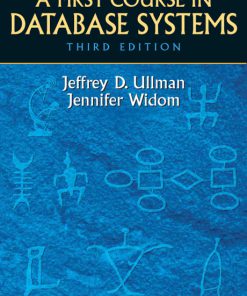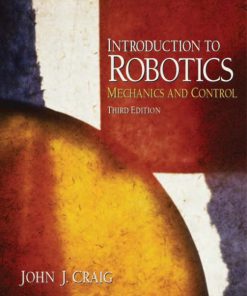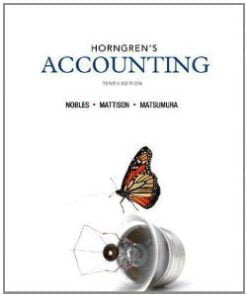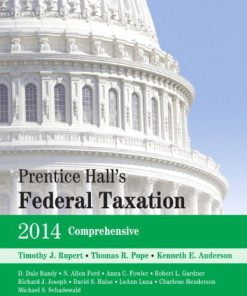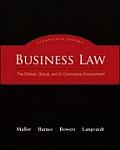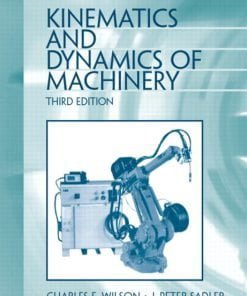Solutions Manual to accompany Fundamentals of Signals and Systems Using the Web and Matlab 3rd edition 9780131687370
$35.00 Original price was: $35.00.$26.50Current price is: $26.50.
Solutions Manual to accompany Fundamentals of Signals and Systems Using the Web and Matlab 3rd edition 9780131687370
Solutions Manual to accompany Fundamentals of Signals and Systems Using the Web and Matlab 3rd edition 9780131687370
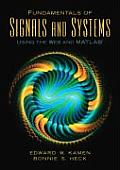
Product details:
- ISBN-10 : 0131687379
- ISBN-13 : 978-0131687370
- Author:
With the presentation at an introductory level, the third edition of the book (2007 copyright) contains a comprehensive treatment of continuous-time and discrete-time signals and systems, with demos on the textbook website (users.ece.gatech.edu/~bonnie/book3), data downloaded from the Web, and illustrations of numerous MATLAB commands for the solution of a wide range of problems arising in engineering and in other fields such as financial data analysis. The book contains a large collection of examples and problems, and practical applications that use actual data dowloaded from the Web. It is shown how data can be downloaded and then imported into MATLAB for analysis by techniques covered in the text. Applications include data analysis in the presense of noise, with the focus on filtering noisy signals and the use of the discrete Fourier transform (DFT) to extract the dominant cyclic components of a signal (time series) from noisy measurements of the signal.
Table contents:
1 FUNDAMENTAL CONCEPTS
1.1 Continuous-Time Signals
1.2 Discrete-Time Signals
1.3 Systems
1.4 Examples of Systems
1.5 Basic System Properties
1.6 Chapter Summary
Problems
2 TIME-DOMAIN MODELS OF SYSTEMS
2.1 Input/Output Representation of Discrete-Time Systems
2.2 Convolution of Discrete-Time Signals
2.3 Difference Equation Models
2.4 Differential Equation Models
2.5 Solution of Differential Equations
2.6 Convolution Representation of Continuous-Time Systems
2.7 Chapter Summary
Problems
3 THE FOURIER SERIES AND FOURIER TRANSFORM
3.1 Representation of Signals in Terms of Frequency Components
3.2 Trigonometric Fourier Series
3.3 Complex Exponential Series
3.4 Fourier Transform
3.5 Spectral Content of Common Signals
3.6 Properties of the Fourier Transform
3.7 Generalized Fourier Transform
3.8 Application to Signal Modulation and Demodulation
3.9 Chapter Summary
Problems
4 FOURIER ANALYSIS OF DISCRETE-TIME SIGNALS
4.1 Discrete-Time Fourier Transform
4.2 Discrete Fourier Transform
4.3 DFT of Truncated Signals
4.4 FFT Algorithm
4.5 Application to Data Analysis
4.6 Chapter Summary
Problems
5 FOURIER ANALYSIS OF SYSTEMS
5.1 Fourier Analysis of Continuous-Time Systems
5.2 Response to Periodic and Nonperiodic Inputs
5.3 Analysis of Ideal Filters
5.4 Sampling
5.5 Fourier Analysis of Discrete-Time Systems
5.6 Application to Lowpass Digital Filtering
5.7 Chapter Summary
Problems
6 THE LAPLACE TRANSFORM AND THE TRANSFER FUNCTION REPRESENTATION
6.1 Laplace Transform of a Signal
6.2 Properties of the Laplace Transform
6.3 Computation of the Inverse Laplace Transform
6.4 Transform of the Input/Output Differential Equation
6.5 Transform of the Input/Output Convolution Integral
6.6 Direct Construction of the Transfer Function
6.7 Chapter Summary
Problems
7 THE z-TRANSFORM AND DISCRETE-TIME SYSTEMS
7.1 z-Transform of a Discrete-Time Signal
7.2 Properties of thez-Transform
7.3 Computation of the Inversez-Transform
7.4 Transfer Function Representation
7.5 System Analysis Using the Transfer Function Representation
7.6 Chapter Summary
Problems
8 ANALYSIS OF CONTINUOUS-TIME SYSTEMS USING THE TRANSFER FUNCTION REPRESENTATION
8.1 Stability and the Impulse Response
8.2 Routh—Hurwitz Stability Test
8.3 Analysis of the Step Response
8.4 Response to Sinusoids and Arbitrary Inputs
8.5 Frequency Response Function
8.6 Causal Filters
8.7 Chapter Summary
Problems
9 APPLICATION TO CONTROL
9.1 Introduction to Control
9.2 Tracking Control
9.3 Root Locus
9.4 Application to Control System Design
9.5 Chapter Summary
Problems
10 DESIGN OF DIGITAL FILTERS AND CONTROLLERS
10.1 Discretization
10.2 Design of IIR Filters
10.3 Design of IIR Filters Using MATLAB
10.4 Design of FIR Filters
10.5 Design of Digital Controllers
10.6 Chapter Summary
Problems
11 STATE REPRESENTATION
11.1 State Model
11.2 Construction of State Models
11.3 Solution of State equations
11.4 Discrete-Time Systems
11.5 Equivalent State Representations
11.6 Discretization of State Model
11.7 Chapter Summary
Problems
APPENDIX A BRIEF REVIEW OF COMPLEX VARIABLES
APPENDIX B BRIEF REVIEW OF MATRICES
BIBLIOGRAPHY
INDEX
People also search:
three fundamental objectives of information system
3 features of federal government
fundamentals of radar signal processing 3rd edition
basic functions of a system
|
linear systems and signals 3rd edition solutions pdf
|
Related products
Solution Manual
International Business Competing in the Global Marketplace Hill 10th Edition Solutions Manual
Solution Manual
Solution Manual
Management Information Systems Managing the Digital Firm Laudon 14th Edition Solutions Manual
Solution Manual
Solution Manual for Introduction to Robotics Mechanics and Control 3rd Edition by Craig
Solution Manual
Prentice Hall’s Federal Taxation 2014 Comprehensive Rupert 27th Edition Solutions Manual
Solution Manual
Solution Manual





